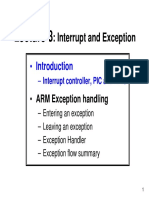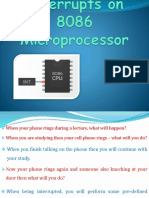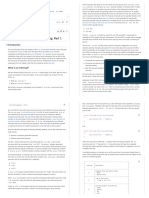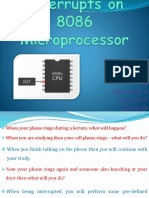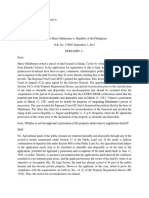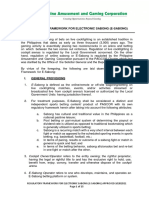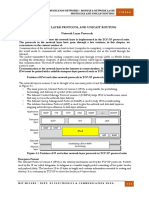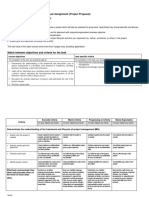0% found this document useful (0 votes)
713 views59 pagesInterrupts and Exceptions: COMS W6998 Spring 2010
The document discusses interrupts and exceptions in computer systems. It describes how hardware such as interrupt controllers and the interrupt descriptor table facilitate interrupts and exceptions. Interrupts allow I/O devices to gain the CPU's attention and get service. Exceptions are processor-detected events like faults, traps, and errors. Interrupts change normal program flow and invoke interrupt service routines.
Uploaded by
Sneha ChavanCopyright
© Attribution Non-Commercial (BY-NC)
We take content rights seriously. If you suspect this is your content, claim it here.
Available Formats
Download as PPT, PDF, TXT or read online on Scribd
0% found this document useful (0 votes)
713 views59 pagesInterrupts and Exceptions: COMS W6998 Spring 2010
The document discusses interrupts and exceptions in computer systems. It describes how hardware such as interrupt controllers and the interrupt descriptor table facilitate interrupts and exceptions. Interrupts allow I/O devices to gain the CPU's attention and get service. Exceptions are processor-detected events like faults, traps, and errors. Interrupts change normal program flow and invoke interrupt service routines.
Uploaded by
Sneha ChavanCopyright
© Attribution Non-Commercial (BY-NC)
We take content rights seriously. If you suspect this is your content, claim it here.
Available Formats
Download as PPT, PDF, TXT or read online on Scribd
/ 59






